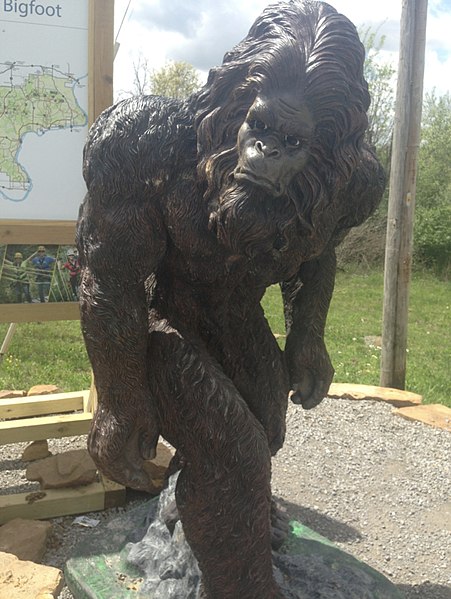Cryptozoology is a pseudoscience and subculture that searches for and studies unknown, legendary, or extinct animals whose present existence is disputed or unsubstantiated, particularly those popular in folklore, such as Bigfoot, the Loch Ness Monster, Yeti, the chupacabra, the Jersey Devil, or the Mokele-mbembe. Cryptozoologists refer to these entities as cryptids, a term coined by the subculture. Because it does not follow the scientific method, cryptozoology is considered a pseudoscience by mainstream science: it is neither a branch of zoology nor of folklore studies. It was originally founded in the 1950s by zoologists Bernard Heuvelmans and Ivan T. Sanderson.
A frame from the Patterson–Gimlin film (1967), whose filmmakers claimed to feature Bigfoot in Northern California. Bigfoot is a popular figure in cryptozoology.
Bigfoot, also commonly referred to as Sasquatch, is a large and hairy human-like mythical creature alleged by some to inhabit forests in North America, particularly in the Pacific Northwest. Bigfoot is featured in both American and Canadian folklore, and since the mid-20th century has grown into a cultural icon, permeating popular culture and becoming the subject of its own distinct subculture.
Bigfoot
"Sassy the Sasquatch" roadside attraction statue in the Garden of the Gods Wilderness within the Shawnee National Forest, Illinois.
A reproduction of the petroglyphs at Painted Rock.
"Bigfoot" carving at the Crystal Creek Reservoir in Colorado.




